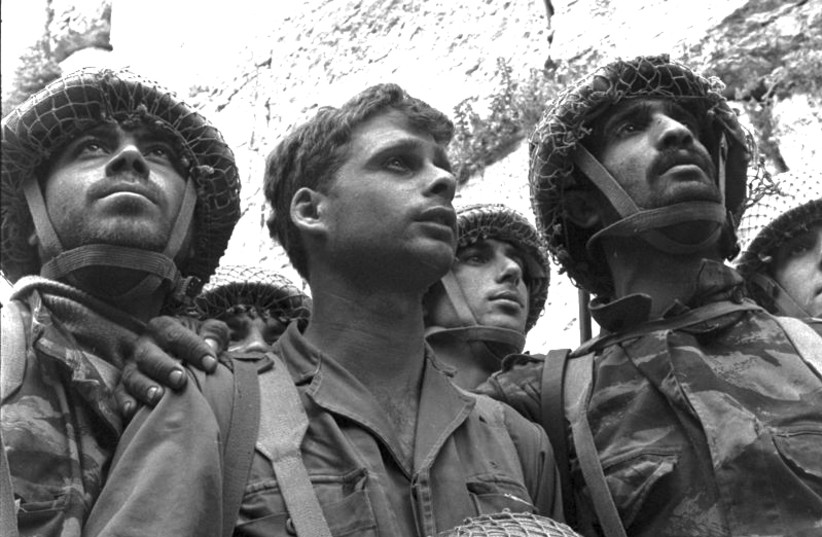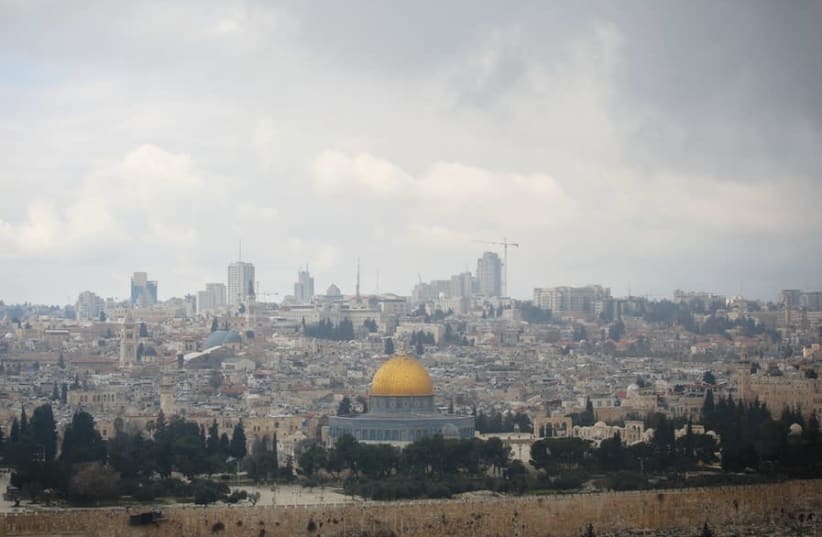

The headline of a newspaper article may arouse your interest, but it’s the story itself that keeps your attention.
In a new updated version of his book Jerusalem on Earth, which he initially published in 1988, veteran New York-born journalist Abraham Rabinovich presents readers with a close-up look at the kaleidoscope of Israel’s developing capital.
Rabinovich, who came to Israel in 1967 to report on the Six Day War for an American newspaper, decided to stay and joined The Jerusalem Post in 1969, remaining on staff for 25 years.
Although he came with considerable experience, he was not interested in plum beats like diplomacy, defense, or the Knesset.
He wanted to feel the city’s pulse from the perspective of its different components and asked to cover the municipal and police beats, which would give him access to legendary mayor Teddy Kollek and council members representing different sectors of the population.


This included the Arab and Christian communities living side by side with Jews, yet not integrating with them or with each other, with the possible exception of some Muslim and Christian Arabs.
Indeed, the people whom he encountered in the course of his career with the Post provided him with material for many books.
Both the original and the revised editions of Jerusalem on Earth have received extremely favorable reviews in Israel and the US.
Each chapter is an enthralling story in itself.
'The Jerusalem That Was and Is No More'
■ ANOTHER BOOK which was recently published is The Jerusalem That Was and Is No More, written by veteran architect and architectural historian David Kroyanker.
Born in Jerusalem and raised in Rehavia, Kroyanker has written extensively about urban planning and Jerusalem’s neighborhoods, streets, and iconic buildings.
He also has been active in lobbying for the preservation of historic buildings, and it saddens him that so many have been destroyed in the name of progress, with, at best, part of the facade integrated into the new structure and a sign explaining what stood there before.
After studying architecture in London, Kroyanker returned to Jerusalem and worked for a private firm before joining the urban planning department of the Jerusalem municipality.
A little over a decade ago, he moved to Tel Aviv but returns periodically to the capital to see the changes in his beloved city.
In a sense, the two books by Rabinovich and Kroyanker complement each other in that each deals with a Jerusalem that the current generation of young adults knows only from history books and documentary films.
Jerusalem has changed radically from the sleepy backwater that it used to be and now boasts the largest population in the country and an extremely advanced urban makeover, which, though generally attractive, has destroyed the city’s previous charm.
Three years later
■ ALMOST THREE and a half years have passed since Prime Minister Benjamin Netanyahu vacated the official Prime Minister’s Residence on the corner of Smolenskin Street and Balfour Road.
It was never occupied by Naftali Bennett and Yair Lapid, but it seems that Netanyahu may be living there again if construction work is completed before his current term of office expires.
Although very little work has been done there over the past couple of years, in recent weeks there has been a flurry of activity with cranes and concrete mixers, as well as other construction equipment, parked on both streets, making it very difficult for pedestrians to pass, and impossible for motorists to cut through Smolenskin Street to Keren Hayesod.
The sudden spurt of construction may be due to the results of the American elections. It is anticipated that soon after his inauguration, President-elect Donald Trump will pay another visit to Jerusalem and will call on the prime minister at his residence as he has done previously.
Thus the remodeling and repair of the residence must be completed in record time. Happily, there will be no need to build a security enclosure at its entrance.
The large structure that was built for Trump’s previous visit in May 2017 is still standing. One repair that remains is the sprucing up of the building next door, which has fallen into total neglect and is overgrown with weeds.
Women helping women
■ ONE OF the highlights of the commencement ceremony this week of Midreshet Nishmat and Keren Gefen was the recognition of the first and second cohorts of Halachic Fertility Counselors.
Women have long been knowledgeable in these matters, and those working with the PUAH Institute for Fertility and Medicine according to Halacha have acquired as much knowledge on the subject as male experts.
Now, under the Gefen program, women can officially provide halachic guidance and support for other women and couples facing challenges during the fertility journey from diagnosis through treatment.
Speakers at the event included Rabbanit Chana Henkin, Rabbi Yaakov Warhaftig, Dr. Karen Friedman, Dr. Yardena Hyman, Rabbanit Atara Eis, and Rabbanit Michal Roness.
It’s an interesting coincidence that while certain sectors of the community were celebrating Thanksgiving with roast turkey and pumpkin pie, at Nishmat they were celebrating another step forward in Torah learning for women and fertility counseling for couples who struggle to conceive.
Hannukah incoming
■ HANUKKAH IS drawing close, and with it the hope for a latter-day miracle by way of the release of the hostages and their return to Israel and their families.
In the hope of heralding such an event, the Jerusalem Cantors’ Choir, conducted by Yotam Segal, will host a Hanukkah Shabbat on December 27-28 at the Seven Arches Hotel overlooking the Mount of Olives. Guest soloist will be Yitzhak Zalman.
Hanukkah candles will be lit in an area facing the Temple Mount. Further details are available at 054-644-5533, jcc.org.il, or the choir’s Facebook page.
greerfc@gmail.com
